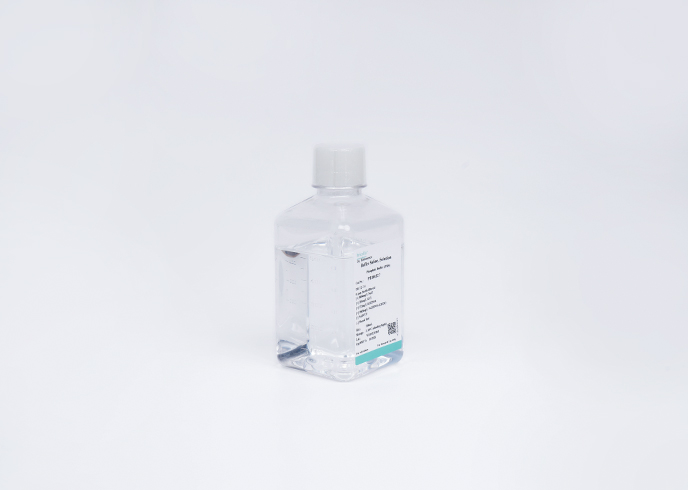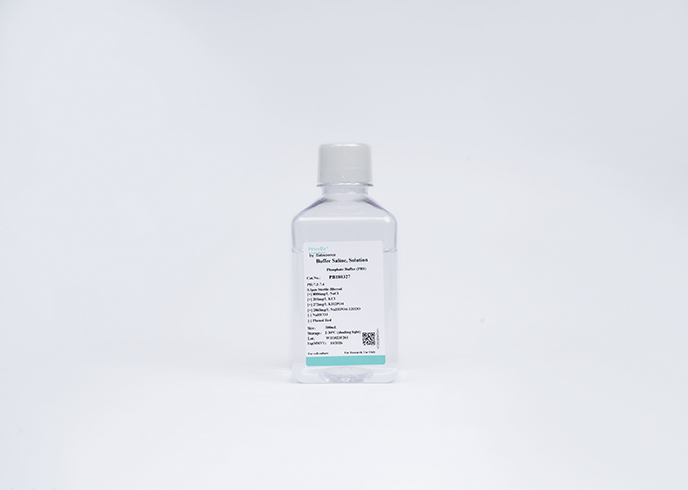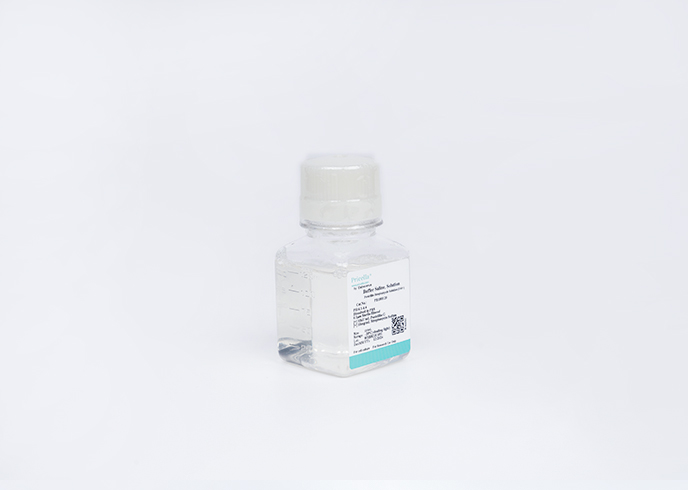


0.25% Trypsin Solution
Cat.No.:PB180225
| Item | Size | Price | Qty |
|---|---|---|---|
| 500mL | $50 | ||
| 125mL | $15 |
Product Introduction
Trypsin is a serine hydrolase that can cut the base-side segment of the lysine and arginine residue in the polypeptide chain, hydrolyze the protein between the cells, and destroy the connection between the cells, so that the tissue or the adherent cells are dispersed into a single cell. The activity of the trypsin is related to the characteristics of the tissue or the cells, the concentration of the trypsin, the temperature and the time of action. At pH 8.0 and 37℃, the effect of the trypsin is the best. Therefore, the concentration of trypsin, the temperature and the time of the pancreatic enzyme should be grasped to avoid the excessive damage of the cells.
In general, the frequently-used working concentration of the trypsin is 0.25%, while the concentration of trypsin for the semi-adherent cells or the cells is 0.05%. Since EDTA is able to bind Ca2+ and Mg2+ to destroy the cell connection to promote the dissociation of the cells, a certain amount of EDTA is often added to the trypsin solution to enhance the dissociation effect.
Matters Need Attention
1. This product is for research use only. 2. It is necessary to pay attention to the aseptic operation and avoid the contamination. 3. It is not suitable for long time storage at room temperature or 2-8℃. 4. Thaw in 2-8℃ and mix fully before use. Avoid repeated freezing and thawing. It is recommended to aliquot the solution and store at -5~-20℃. 5. Because the sensitivity to trypsin of different tissues or cells are differently. The reaction time of trypsin should be determined according to the actual situation. Otherwise it will affect the the adhesion and growth of cells.
| Specifications | |
| Concentration | 0.0025 |
| Volume | 125mL,500mL |
| Form | Liquid |
| Bacteria Detection | Negative |
| Fungi Detection | Negative |
| Mycoplasma Detection | Negative |
| PH | 7.2-7.4 |
| Osmotic Pressure | 270-320 |
| Green Features | Sustainable packaging |
| Dissolvent | 10 mM PBS |
| Valid Period | 12 months |
| Storage Condition | -5--20℃, shading light |
| Shipping Condition | Ice bag |
Related Products
Documents
Manual
MANUAL_0.25% Trypsin Solution.pdf
Formulation
0.25% Trypsin Solution_formulation.pdf
MSDS
MSDS_0.25% Trypsin Solution.pdf
Citations
A dual-targeted hyaluronic acid-gold nanorod platform with triple-stimuli responsiveness for photodynamic/photothermal therapy of breast cancer
IF: 10.633Author:Weijun Xu, Junmin Qian, Guanghui Hou
Journal:Acta Biomaterialia
PEGylated hydrazided gold nanorods for pH-triggered chemo/photodynamic/photothermal triple therapy of breast cancer
IF: 10.633Author:Weijun Xu, Junmin Qian, Guanghui Hou
Journal:Acta Biomaterialia
A double-network poly(Nɛ-acryloyl l-lysine)/hyaluronic acid hydrogel as a mimic of the breast tumor microenvironment
IF: 10.633Author:Weijun Xu, Junmin Qian, Guanghui Hou
Journal:Acta Biomaterialia
NIR/pH dual-responsive polysaccharide-encapsulated gold nanorods for enhanced chemo-photothermal therapy of breast cancer
IF: 8.457Author:Weijun Xu, Jinlei Wang, Junmin Qian
Journal:Materials Science & Engineering C-Materials for Biological Applications
A novel pH-sensitive targeting polysaccharide-gold nanorod conjugate for combined photothermal-chemotherapy of breast cancer
IF: 10.723Author:Guanghui Hou, Junmin Qian, Weijun Xu
Journal:Carbohydrate Polymers
Convenient synthesis of zwitterionic calcium(II)-carboxylate metal organic frameworks with efficient activities for the treatment of osteoporosis
IF: 6.51Author:Yu Hou, Caizhu Luo, Denghui Xie
Journal:International Journal Of Pharmaceutics
Downregulation of microRNA‐124 prevents the development of acute liver failure through the upregulation of PIM‐3
IF: 2.858Author:Tao Zan, Li Piao, Xueqin Yang
Journal:Experimental Physiology
DOI:10.1113/EP087963
Cited products: PB180225
TGF‑β/Smad3 pathway enhances the cardio‑protection of S1R/SIPR1 in in vitro ischemia‑reperfusion myocardial cell model
IF: 2.751Author:Tingfang Yang, Xianfeng Zhang, Cuimei Ma
Journal:Experimental and Therapeutic Medicine





